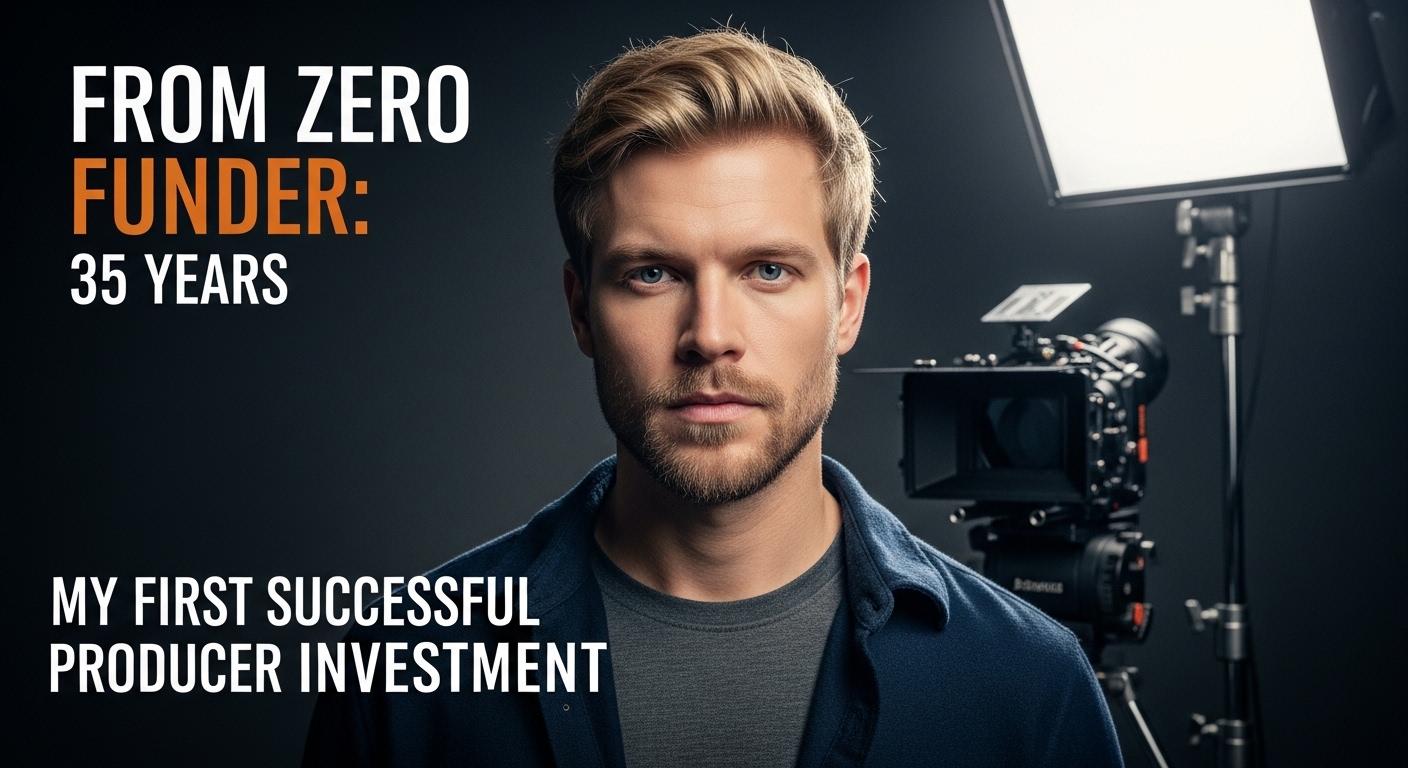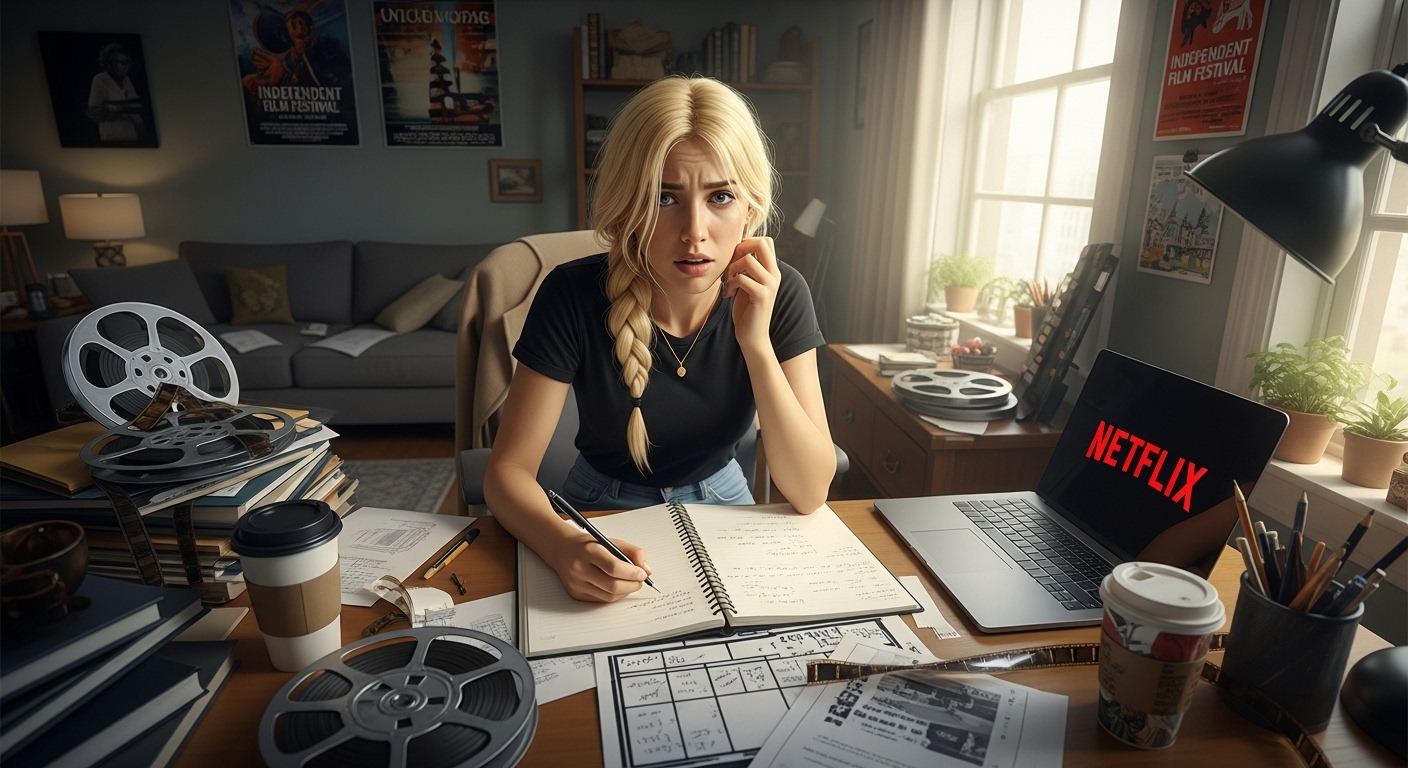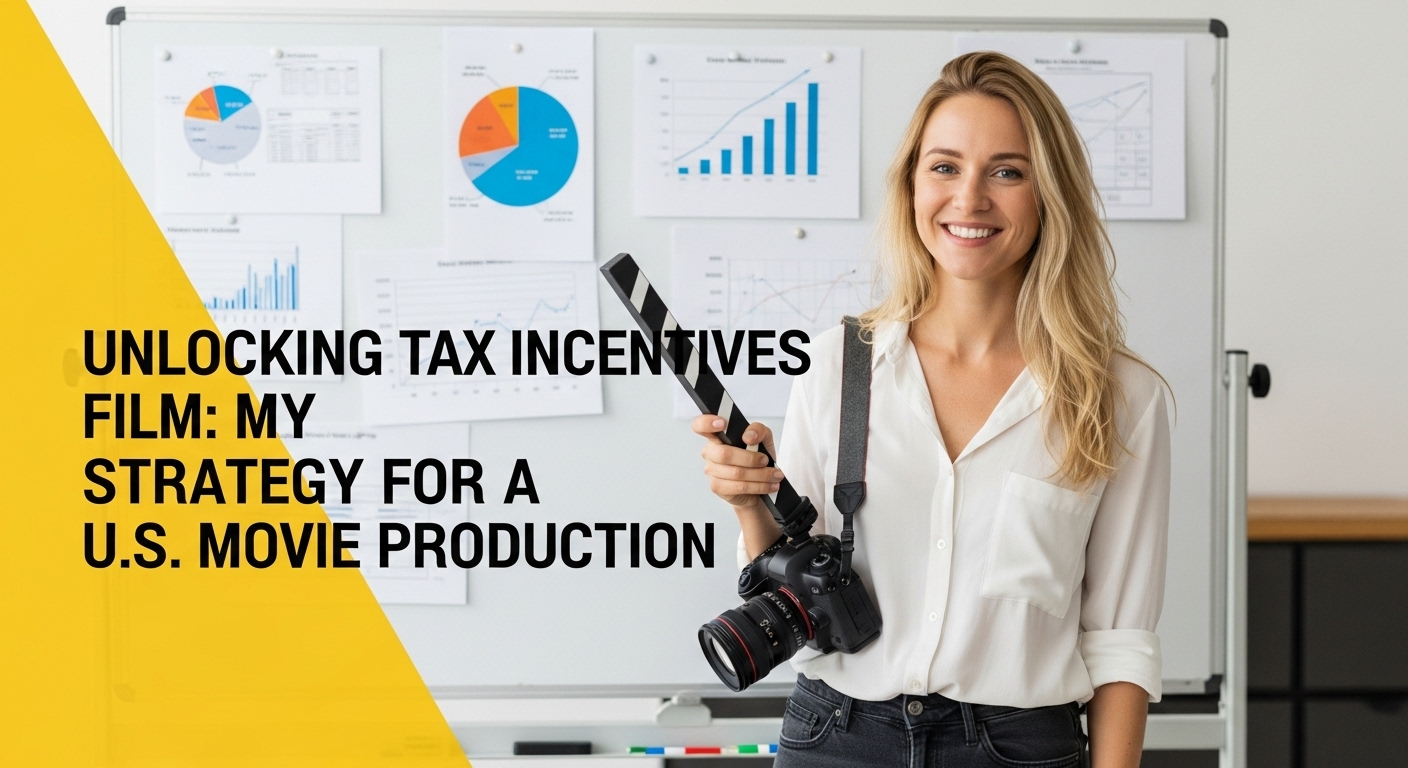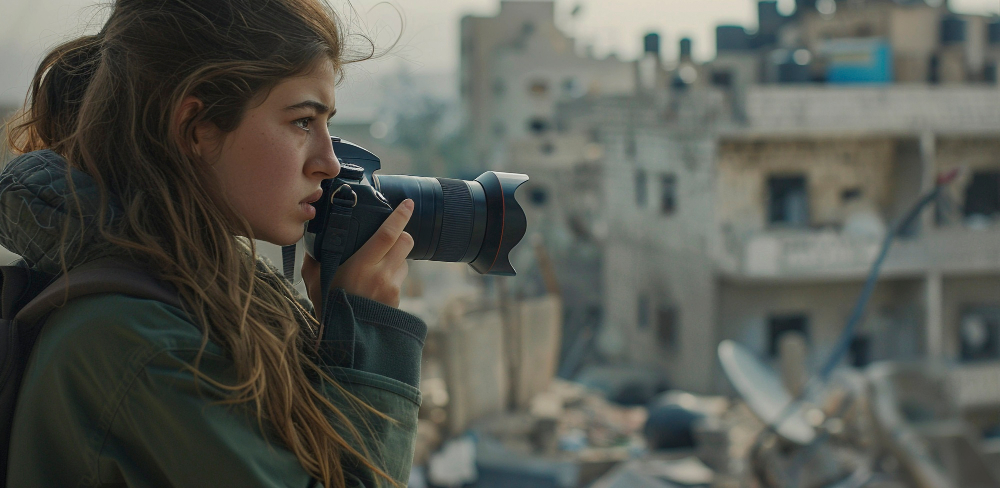In the world of film, storytelling transcends mere words. Visual storytelling is a powerful language all its own. It weaves emotions and themes through images, crafting an experience that resonates deeply with audiences. At its core, visual storytelling taps into our instinctual responses to sight, guiding us through a narrative without always relying on dialogue.
This fusion of visuals and narrative creates an immersive experience that can linger in our minds long after the credits roll.
The evolution of storytelling techniques in cinema reflects a dynamic journey from silent films to today’s technologically advanced productions. Early filmmakers mesmerized audiences with inventive visuals and cinematic tricks, laying the groundwork for what film could achieve.
As technology progressed, so did the techniques available to storytellers. Today, filmmakers can harness elements like light, composition, and cinematography to evoke feelings and emphasize themes in unprecedented ways. This transformation challenges creators to explore how they convey their vision not just with words but with every frame and shot.
Join us as we delve into the significance of visual storytelling in film production. We’ll uncover its foundational principles, examine iconic examples throughout history, and explore emerging trends reshaping how stories are told on screen.
Whether you’re a filmmaker or simply someone who loves cinema, this journey will inspire you to rethink how visuals can transform narratives into unforgettable experiences.
The Foundation of Visual Storytelling.
Visual storytelling is often heralded as the backbone of cinema, transcending the limitations of dialogue to convey complex emotions and themes. While most film narratives incorporate spoken words, it is the visuals that breathe life into characters and situations, allowing audiences to connect on a more visceral level.
Consider the powerful moment in “The Silence of the Lambs” when Clarice Starling steps into Hannibal Lecter’s cell; the stark, imposing set design and careful framing accentuate both the tension and psychological dynamics at play between them.
This scene exemplifies how visuals can deliver narrative depth far beyond mere conversation, enabling viewers to experience fear, intrigue, or empathy without a single word being uttered.
Cinematography plays a crucial role in enhancing this narrative depth, immersing audiences in the emotional landscape of a film. The choices made by cinematographers—including camera angles, shot composition, and lighting—are instrumental in evoking specific feelings.
For instance, in Emmanuel Lubezki’s work on “Birdman,” long continuous shots create an intimate atmosphere while fluidly guiding viewers’ attention through emotionally charged moments.
Each movement serves not merely as aesthetic flair but as a purposeful device that pulls us deeper into protagonist Riggan Thomson’s internal struggle for redemption and relevance.
This interplay between cinematography and storytelling enriches the viewer’s experience and underscores the importance of visual craftsmanship in cinema.
Another dimension worth exploring is how visuals can effortlessly convey themes that may otherwise feel heavy-handed if expressed solely through dialogue.

A notable example can be found in “Life of Pi,” where stunning imagery portrays Pi’s journey—from navigating perilous seas alone to confronting existential questions about faith and survival.
The symbolic use of water throughout reflects not just his physical journey but also his spiritual one; matches lit against wild ocean waves articulate conflicts that resonated on many levels yet remain unspoken throughout much of the film.
Thus, effective visual storytelling transforms abstract concepts into tangible experiences that resonate with viewers long after they leave the theater.
Ultimately, delving into visual storytelling reveals its foundational nature within film production—it’s where imagination meets craft to evoke empathy and guidance through tumultuous narratives.
By breaking away from dialogue-driven exposition, filmmakers enhance their ability to explore intricate human emotions—and reveal truths about existence—in ways that resonate universally across diverse audiences.
Techniques for Effective Visual Storytelling.
Effective visual storytelling hinges on a filmmaker’s ability to manipulate composition, color palettes, and lighting. Each of these elements works in concert to create an atmosphere that can profoundly influence audience perception.
For instance, the composition of a shot—how elements are arranged within the frame—can alter how viewers interpret a scene. A tightly framed close-up can evoke intimacy or tension, while wide shots might convey isolation or grandeur.
Films like “Moonlight,” which adeptly uses composition to mirror emotional beats, highlight how deliberate framing enhances narrative depth and viewer engagement.
Color also plays a pivotal role in guiding audience emotions. Filmmakers often utilize specific color palettes to establish mood and signify changes throughout the story.
For example, in “The Grand Budapest Hotel,” Wes Anderson employs distinct color schemes that not only set each location apart but also reflect the emotional undertones of the characters’ journeys.

Additionally, lighting greatly affects visual storytelling by illuminating subjects and creating shadows that imply mystery or urgency.
The interplay of light and dark can evoke feelings ranging from stark realism to dreamlike fantasy; think of how “Blade Runner 2049” uses neon lights juxtaposed with deep shadows to explore themes of identity and memory.
Camera angles and movements are equally crucial for guiding viewer focus and enhancing narratives. Low angles may imbue characters with power or menace, making them appear more imposing, while high angles can suggest vulnerability or insignificance.
Films like “Citizen Kane” demonstrated innovative camera techniques that changed cinematic vocabularies forever; Orson Welles mastered use of deep focus where everything in a frame is in sharp detail, compelling viewers to observe all elements at play simultaneously.
Furthermore, dynamic camera movements—like tracking shots or pans—can add fluidity to scenes that draw audiences deeper into action or emotional dialogue.Ultimately, when filmmakers skillfully integrate these visual storytelling techniques, they create immersive experiences that resonate long after the credits roll.
By thoughtfully composing their shots with intentional lighting choices and deliberately crafting movement and angles, they transcend mere narrative exposition to evoke genuine emotional responses from their audiences—a testament to the artistry inherent in film production.
The Emotional Impact of Visuals.
Visual storytelling wields a profound emotional impact, engaging viewers not just through dialogue but by immersing them in the essence of the characters’ experiences.
Images can convey complex emotions with unparalleled clarity, taking advantage of facial expressions, body language, and mere visuals to resonate with audiences on a deeper level.
Think of scenes where a close-up shot captures tears welling in a character’s eyes; it instantly invites empathy and creates an intimate connection between viewer and character.
This non-verbal communication lays a strong foundation for understanding motivations and themes without needing to rely heavily on spoken words.
One shining example is found in Pixar’s “Up,” particularly during the opening montage that chronicles Carl and Ellie’s life together. In just a few minutes, this beautifully crafted sequence uses no dialogue yet tells an entire story filled with joy, aspiration, love, loss, and ultimately heartbreak.
Viewers feel immense emotion as they experience the highs and lows of Carl and Ellie’s journey through their jubilant wedding days to quiet moments towards life’s end.

The power lies not just in what is shown but also in what is left unsaid—an artistic choice that underlines how visuals possess the ability to evoke nostalgia and human connection unlike anything else.
Another film that effectively employs visual storytelling is “Schindler’s List.” Director Steven Spielberg cleverly contrasts stark black-and-white imagery with vibrant splashes of color—most notably the girl in the red coat—to stir poignant emotions about innocence lost amid tragedy.
This iconic use of color symbolizes hope amidst despair while anchoring viewers’ emotional responses at critical junctures throughout numerous distressing scenes.
By shifting focus visually, filmmakers heighten an audience’s empathy for individuals caught within monumental historical events that otherwise might feel distant or abstract.
Through these case studies, it becomes evident that visual storytelling transcends cultures and languages; it speaks directly to our shared human experience by tapping into universal emotions.
Thus, filmmakers can significantly enhance emotional engagement by making thoughtful choices regarding imagery whether they’re creating fantastical animations or depicting harsh realities.
As we dive deeper into filmmaking techniques today, recognizing this extraordinary power allows creators to connect more profoundly with their audiences—leaving lasting impressions long after credits roll.
Iconic Examples in Film History.
Throughout cinema history, certain films have elevated the practice of visual storytelling to an art form, using striking imagery and clever cinematographic techniques to leave an indelible mark on audiences. “The Godfather,” directed by Francis Ford Coppola, is a prime example of how powerful visuals can define a narrative.
The film’s opening sequence, featuring the tender yet tense scene where Vito Corleone attends to the requests of various characters at his daughter’s wedding, utilizes dim lighting and close-ups to convey both intimacy and authority.
Each frame meticulously crafted, it allows for non-verbal cues to express the complexity of relationships, presenting themes of power and loyalty without relying heavily on dialogue.
On the other hand, Stanley Kubrick’s “2001: A Space Odyssey” takes a more abstract approach but equally emphasizes visual language.
The film employs stunning imagery—like the iconic match cut from a bone tool flung into the air to a space station—to explore profound concepts of evolution and humanity’s place in the cosmos.
This transition doesn’t just rely on special effects; it challenges viewers’ perceptions by inviting them to make connections that go beyond mere plot progression.
With its use of color and composition, Kubrick creates a kaleidoscope that resonates emotionally while simultaneously provoking deep philosophical reflections about existence itself.

Comparing scenes from these two masterpieces reveals how distinct approaches to visual storytelling can yield remarkable emotional resonance.
For instance, while “The Godfather” relies on tight framing and shadows to communicate tension among familial ties, “2001: A Space Odyssey” uses expansive shots of outer space and haunting silence to evoke loneliness and existential contemplation.
Both films stand as testaments to how filmmakers can employ visuals as their primary language—shifting perspectives through careful choices in composition and pacing that connect deeply with the audience’s psyche.
In essence, these iconic examples illustrate that visual storytelling isn’t merely an accessory in film production; it’s indispensable for crafting narratives that linger long after credits roll.
By examining their techniques—and recognizing how they shape our engagement with story—we see not just classic cinema but also lessons for aspiring filmmakers who wish to evoke emotion through their own lenses.
Challenges Facing Today’s Filmmakers.
As filmmakers navigate the complex landscape of modern cinema, they are often caught in a tug-of-war between traditional narrative structures and contemporary visual styles. The rise of visually-driven storytelling has transformed audience expectations; now, viewers anticipate a feast for the eyes as well as compelling narratives.
This shift necessitates that filmmakers rethink how to integrate striking visual elements without abandoning classic storytelling techniques that resonate with audiences on an emotional level.
For instance, films like “Birdman” have successfully intertwined innovative cinematography—all crafted to look like one continuous shot—with deep character exploration, showcasing that it is possible to modernize visuals while respecting narrative integrity.
Moreover, budget constraints pose a significant challenge for many independent filmmakers striving to create high-quality visuals reminiscent of big-budget productions. While advancements in digital technology have democratized access to filmmaking tools, achieving cinematic appeal still requires careful resource management.

Filmmakers must become creative problem-solvers—utilizing available locations effectively or opting for practical effects instead of costly CGI—to maintain visual standards within tight budgets.
A great example is Richard Linklater’s “Boyhood,” which was produced over twelve years with minimalistic approach but gained remarkable visual depth through its steady character development and strong sense of time.
In addition to these challenges, today’s creators must also contend with rapidly evolving audience tastes facilitated by streaming platforms that prioritize both innovation and accessibility.
With viewers accustomed to high production values across multiple formats—from episodic series to feature films—it becomes imperative for filmmakers to achieve that same level of quality irrespective of their financial limitations.
Many are turning towards collaboration and community resources, joining forces with local artists or relying on crowdfunding campaigns not just for funds but also for creative input that enhances visual storytelling.
Ultimately, while the challenges facing today’s filmmakers can be daunting, they also foster ingenuity and adaptability. It is this very struggle that often leads to groundbreaking work—films that capture audiences’ hearts while simultaneously pushing the boundaries of what visual storytelling can achieve in the digital age.
By honing their craft amidst these obstacles, filmmakers pave the way toward more immersive cinematic experiences capable of making a lasting impact.
The Role of Technology in Modern Visual Storytelling.
As technology continues to advance at an unprecedented pace, its impact on visual storytelling in film production is both profound and transformative. Digital filmmaking tools have democratized the art of cinema, allowing filmmakers to express their creative visions without the hefty price tags that once accompanied high-quality production values.
For instance, cameras like the Blackmagic Pocket Cinema Camera 6K offer filmmakers cinematic capabilities at a fraction of traditional costs.
These advancements enable even independent creators to explore intricate visual narratives that resonate deeply with audiences. Filmmakers are now empowered to experiment with visuals ranging from dynamic compositions to sophisticated effects, pushing the boundaries of their artistic expression.
Furthermore, the rise of virtual reality (VR) and augmented reality (AR) has opened up entirely new dimensions for storytelling. Unlike traditional media, these immersive platforms allow audiences to engage with narratives interactively, drawing them into stories rather than simply presenting them on-screen.
For example, experiences like “The Invisible Hours” let players step into a meticulously crafted world where they can explore characters’ motivations and decisions firsthand.
This level of engagement fosters a more personal connection between viewers and narratives, showcasing how technology can significantly enhance emotional investment—a goal every filmmaker aspires to achieve.
Moreover, as AR integrates with everyday life through smartphones and devices like Microsoft’s HoloLens, filmmakers can consider blending real-world interactions with curated digital experiences.

By augmenting reality with narrative elements—think scenes unfolding in your living room or interactive plot points while you watch—filmmakers are afforded inventive ways to present complex stories.
Storytellers are tasked not only with crafting compelling plots but also creating engaging environments where viewers can actively participate in their narratives.
Ultimately, the evolution of technology continues to reshape visual storytelling within film production. As creatives harness these tools—from digital cameras that enhance visual aesthetics to immersive mediums like VR and AR—they unlock new pathways for audience engagement and emotional resonance.
The possibilities appear endless; it is an exhilarating time for filmmakers eager to explore what comes next in this visually-driven age of storytelling.
Educating the Next Generation.
As the landscape of film production continues to evolve, the importance of teaching visual storytelling principles at film schools cannot be overstated. Future filmmakers must understand that visuals can communicate far more powerfully than words alone.
A comprehensive education in visual storytelling equips students with the tools they need to create impactful narratives that resonate emotionally with their audience. Programs focusing on this aspect not only foster creativity but also encourage innovative thinking among aspiring filmmakers, giving them a competitive edge in an industry that thrives on originality.
To effectively explore visual storytelling, many institutions incorporate hands-on workshops and project-based learning into their curriculum. By engaging students in collaborative projects, educators can guide them through the practical applications of visual techniques such as framing, color theory, and lighting.
Additionally, analyzing iconic films serves as a valuable resource for understanding how established directors have employed these elements—to evoke specific feelings or underscore thematic nuances.
Educational platforms like MasterClass offer insights from renowned filmmakers who share their expertise on crafting compelling visuals, emphasizing that each frame should serve a purpose in telling the story.
In addition to formal education, filmmakers and students can tap into a variety of online resources to further develop their skills in visual storytelling. Websites such as No Film School and IndieWire provide articles and tutorials on cinematography techniques, while forums allow for community discussions where emerging creators can seek feedback on their work.
Moreover, participating in local filmmaking groups or attending film festivals creates networking opportunities where future professionals can share experiences and learn from one another’s unique approaches to visual narrative craft.
Ultimately, by emphasizing the significance of visual storytelling within educational settings and providing diverse resources for self-improvement, we can cultivate a new generation of filmmakers skilled at using vision as a powerful narrative tool.
This foundation will enable them not only to tell stories more effectively but also to push the envelope on what cinema can achieve creatively—making bold strides toward an even more engaging future for audiences worldwide.
Future Trends in Visual Storytelling.
As technology continues to march forward, the landscape of visual storytelling in film production is poised for dramatic transformation. Emerging tools such as artificial intelligence and machine learning are beginning to influence how filmmakers approach narrative construction.
For instance, AI-generated content can streamline the pre-production process by analyzing scripts, suggesting visual styles, or even assisting in editing with unparalleled precision.
This shift allows creators to focus more on their artistic visions while capitalizing on technology to enhance productivity and creativity. Filmmakers may find themselves collaborating with AI not just as a tool but as a co-creator that offers innovative solutions for storytelling challenges.
Interactive media is also carving out a new frontier for filmmaking, inviting audiences not merely to passively consume narratives but to engage actively with them. Platforms like Netflix have already begun experimenting with interactive films where viewer choices shape the course of the story.
Projects like “Black Mirror: Bandersnatch” exemplify this trend, showcasing how intricate branching narratives can deepen engagement and investment from viewers.
As virtual reality (VR) and augmented reality (AR) technologies continue to develop, they will further blur the lines between creator and audience, leading to immersive experiences that challenge traditional storytelling norms.
Moreover, advancements in 360-degree cinematography could pave the way for filmmakers to craft experiences that envelop audiences fully within their stories.
Imagine walking through a VR representation of an iconic film scene—feeling the tension build around you as you navigate environments designed with meticulous detail—all driven by your own choices and movements.
This open-world approach could revolutionize not just how stories are told but also how they resonate emotionally, fostering deeper connections between characters and audience members who can literally step into those worlds.
In conclusion, the future of visual storytelling is rich with potential fueled by technological advancements and innovative concepts like interactive narratives.
As filmmakers embrace these changes, they will need to balance tradition with innovation while being mindful of staying true to their voice in evolving mediums.
The exploration of these boundaries promises an exciting era ahead where storytelling knows no limits—a place where creativity thrives at the intersection of art and technology.
Embracing the Art of Visual Storytelling.
In conclusion, visual storytelling is a transformative force in film production. It shapes how audiences connect with characters and narrative. The power of imagery can evoke deep emotions, often communicating what words cannot.
With every frame, filmmakers have the chance to make a lasting impact on their viewers. By leveraging composition, color, and movement, storytellers can craft experiences that resonate long after the credits roll.
As you embark on your filmmaking journey, embrace the techniques of visual storytelling. Experiment with different visuals to elevate your narrative.
Remember that engaging your audience goes beyond script; it’s about creating an emotional landscape through visuals. Harness this art form to leave a mark on audiences everywhere—your vision deserves to be seen and felt.

I am a highly experienced film and media person who has a great deal to offer to like-minded individuals. Currently working on several exciting projects, I am a film and media practitioner for over a decade. I have achieved a great deal of success in my professional career.





